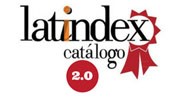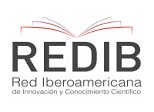La Satisfacción del Ambiente Laboral en el Departamento de Ciencias Económicas, Administrativas y del Comercio de la Universidad de las Fuerzas Armadas
DOI:
https://doi.org/10.69890/hallazgos21.v5i1.396Palabras clave:
Ambiente laboral; Departamento de Ciencias Económicas, Administrativas y del Comercio; Universidad de las Fuerzas Armadas.Resumen
En la actualidad, las estrategias sobre dirección y desarrollo del personal son el factor más importante que permite el logro de los objetivos institucionales. Dentro de este campo existen procesos que intervienen directamente, tales como la capacitación, remuneración, condiciones de trabajo, motivación y clima organizacional. El factor humano constituye un elemento vital para el desarrollo de los procesos de cualquier organización. Para analizar la satisfacción del ambiente laboral en el Departamento de Ciencias Económicas, Administrativas y del Comercio de la Universidad de las Fuerzas Armadas, se realizó un estudio cuantitativo, para presentar propuestas de solución. La muestra quedó conformada por un total de 134 profesores a los que se les aplicó una encuesta. El cuestionario de ésta quedó compuesto por 14 preguntas, distribuidas en 11 módulos que integran información sobre los factores que influyen en el grado de satisfacción de los docentes del departamento, tales como la relación con los compañeros y superiores, reconocimiento, entorno físico, supervisión y participación en la toma de decisiones. Se realizó el análisis de Correspondencia Múltiple. Los resultados confirman el impacto que tiene el conjunto de factores como la relación entre compañeros y supervisores. Se concluyen que el entorno físico y el reconocimiento por su trabajo influyen, de manera especial, en el grado de satisfacción de los docentes.
Citas
Consorcio de Organizaciones Privadas de Promoción al Desarrollo de la Micro y Pequeña Empresa (COPEME). (2009). Medición del Clima Laboral para IMF´s. Recuperado de https://sptf.info/images/medicion_del_clima_laboral.pdf
Esparragoza, D. J., Sánchez Bejarano, C., & Martínez Díaz, D. (2014). Diferencias del clima laboral entre empleados contratados por outsourcing y empleados directos: evidencia empírica de la zona norte de Colombia. Universidad & Empresa, 16(26), 277-295. Recuperado de https://www.redalyc.org/articulo.oa?id=1872/187232713012
Ali Giraldo, W.A., Romero Reales, I., Vizcaíno, C.A., & Ceballos Ospino, G.A. (2012). Estudio del clima organizacional en una empresa prestadora de servicio de vigilancia y seguridad privada. Clío América, (11), 99 – 122.
Robbins, S. P. & Deras Q., A. (1996).Comportamiento organizacional: teoría y práctica México:Prentice Hall Hispanoamericana.
Sánchez, L. (2010). ¿Qué es el clima laboral?. Recuperado de https://www.emprendepyme.net/que-es-el-clima-laboral.html
Visbal Pérez, E. T. (2012). Características de un espacio virtual para la capacitación en la calidad. Caso: Universidad Simón Bolívar. Revista de Tecnología de Información y Comunicación en Educación, 6 (2).
Visbal Pérez, E. T. (2014). Clima organizacional para una cultura de calidad. Orbis. Revista Científica Ciencias Humanas, 10(29),121-144. Recuperado de https://www.redalyc.org/articulo.oa?id=709/70932556007
Publicado
Cómo citar
Número
Sección
Licencia
Los artículos enviados a la Revista Científica Hallazgos21 deberán ser totalmente originales e inéditos.
Los autores son los responsables de los textos y las imágenes incluidas en los artículos y no necesariamente reflejan el pensamiento de la editorial o de la Pontificia Universidad Católica del Ecuador, Sede Esmeraldas (PUCESE).
Los autores disponen cederle a la Revista Científica Hallazgos21 todos los derechos inherentes para la edición, publicación y distribución o divulgación del mismo.
Se autoriza a las revistas firmantes de los acuerdos de Encuentros de Revistas Latinoamericanas para reproducir en parte o totalmente los artículos con la sola mención de la fuente claramente señalada.







